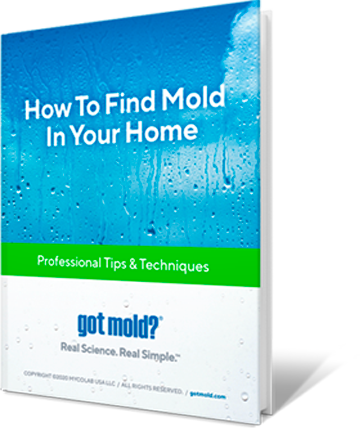
Do you know how humid your home is?
Humidity isn’t an issue reserved only for people living in hot, tropical environments. Even if you live in a cold or dry climate, you could still have household humidity issues to worry about. Too much (or too little) humidity can lead to problems, from mold growth to health issues for occupants.
Discover what the ideal humidity level should be in your home—and why it matters for the health and safety of your family.
What Is Humidity?
Before we get into the ideal humidity levels for your home, let’s take a moment to understand better what humidity is and what can impact it in indoor and outdoor environments.
Humidity is the measure of the amount of water vapor in the air.
Remember when you were a kid and learned about the different forms of water? It can be liquid, like the water pouring out of your kitchen sink, solid, like the ice cubes in your freezer, or gaseous, like the water vapor found in the air.
If there is a lot of water vapor in the air, the humidity levels are high.
If you’ve ever been somewhere with high humidity, you’ll recognize the feeling: like you’ve stepped into a steamy shower room and can’t get dry, no matter what. You also likely felt hot and sticky; when the humidity is high, the air gets so clogged with water vapor that there isn’t much room for anything else. Even your sweat can’t evaporate off your body to cool you down because there’s no room in the air for any excess moisture to evaporate off you! You might also notice that cool surfaces, like cold water pipes and tile floors, are damp due to condensation.
If there is minimal water vapor in the air, the humidity levels are low.
If you’ve ever been somewhere cold and dry, you’ll know how too little humidity feels. Without enough moisture in the air, your skin and mucous membranes dry out and feel chapped, cracked, and uncomfortable. Too little moisture in the air can also impact immune health, which we’ll learn more about in a minute.
When talking about humidity, what we usually reference is relative humidity or RH, which tells us how much moisture is in the air compared to the maximum amount of moisture that can be contained in the air at a certain temperature. This is expressed as a percentage, as in 50% humidity, or 50% RH.
Another measurement of humidity is called absolute humidity. This represents the weight ratio of vaporized water to 1 kg of dry (moisture-free) air. This measurement is expressed as kg/kg, as in 0.008 kg/kg. This is mostly the measure used by nerds like us who study these things.
When we are measuring humidity levels and discussing the ideal humidity levels in a home, relative humidity is more commonly used.
So let’s focus on relative humidity and the percentages that make up a healthy, comfortable home!
What Impacts Humidity Levels?
Temperature is one of the more prominent factors when it comes to influencing humidity levels.
- As temperatures rise, the amount of moisture the air can hold increases.
- As temperatures drop, the amount of moisture the air can hold decreases.
Imagine a sponge. As temperatures increase, that sponge gets larger and can absorb more water (or water vapor, to be more precise). But as temperatures drop, that sponge gets squeezed smaller and tighter, resulting in less room for water.
Temperature isn’t the only factor that impacts humidity levels, either.
Everyday household activities can release more water vapor into the air, such as:
- cooking
- showering/bathing
- watering plants
- hanging laundry to dry inside the home
Plus, spills and water leaks can also release more water vapor into your home.
Even something as simple as opening a window can impact indoor humidity levels by letting in more water vapor from outside.
If your indoor air becomes too humid, it can result in a myriad of issues, including these 5 symptoms of excess humidity in the home.
What Is the Ideal Humidity Level in a Home?
So what is the ideal humidity level for optimal comfort, health, and safety?
According to ASHRAE (American Society of Heating, Refrigerating and Air-Conditioning Engineers), the ideal indoor humidity range is between 40% and 60%.
Dry indoor air (between 0-40%) becomes a physical health hazard. It can impair the respiratory immune system defenses, allowing viruses to infect us more easily. Plus, evaporation of moisture leads to airborne viruses that can more easily float through the air and survive longer, which increases our chance of catching viral illnesses.
Overly moist indoor air (from 60% to 100%) can also feel uncomfortable to our bodies. But the big concern of overly humid air is that it creates a water-rich environment for unfriendly organisms to grow and thrive. Mold is just one example of an organism that needs moisture to grow and spread. Another is dust mites, which thrive in humid environments. Between 40% and 50% humidity is ideal for controlling dust mites. Above 50% humidity and dust mites can go from bothersome to out of control.
“Relative humidity of 40-60% in buildings will reduce respiratory infections and save lives,” says Dr. Stephanie Taylor, Infection Control Consultant at Harvard Medical School.
Want to learn more about how moisture can impact the health and safety of your home and what tools can best help you measure, monitor, and control your humidity levels? Check out our Complete Guide to Humidity and Moisture in the Home.

